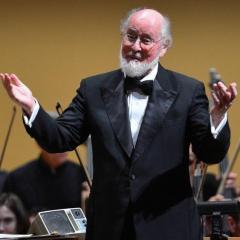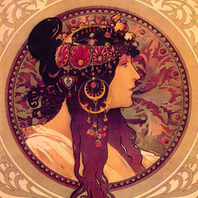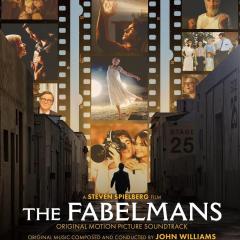-
Posts
733 -
Joined
-
Last visited
-
Days Won
18
Reputation Activity
-
 Falstaft reacted to BTR1701 in Musical Analysis of the Imperial March - With Cartoons
Falstaft reacted to BTR1701 in Musical Analysis of the Imperial March - With Cartoons
Not in the language of music it isn't. You can rant about it all you like, but that won't change the reality and practice of music theory that's been in effect for centuries.
-
 Falstaft reacted to BTR1701 in Musical Analysis of the Imperial March - With Cartoons
Falstaft reacted to BTR1701 in Musical Analysis of the Imperial March - With Cartoons
Which one is properly used depends on the key and chord.
It's like in language where two words can mean the same thing but depending on the context, one is correct and the other is not.
-
 Falstaft reacted to Marian Schedenig in Williams confirms EPISODE IX !!
Falstaft reacted to Marian Schedenig in Williams confirms EPISODE IX !!
Not to forget that one of the frequently discussed aspects of Wagner's Ring is the supposed stylistic break from when he stopped working on it for 12 years.
-
 Falstaft reacted to Not Mr. Big in Williams confirms EPISODE IX !!
Falstaft reacted to Not Mr. Big in Williams confirms EPISODE IX !!
LOTR and SW are hard to compare IMO. Star Wars is a collection of fantastic individual scores while LOTR is more cohesive/all-encompassing with less individuality between entries (+The Hobbit scores which aren't as good).
They are both singular achievements in film scoring and its possible to acknowledge one without subtlely knocking the other.
-
 Falstaft reacted to crumbs in Williams confirms EPISODE IX !!
Falstaft reacted to crumbs in Williams confirms EPISODE IX !!
Who cares? You have to be joking, right? What's not utterly fascinating about a composer who wrote a suite of themes over 4 decades ago, and whose style and artistic leanings have evolved and matured in the intervening years, is still expanding upon these ideas with his modern sensibilities? That's half the reason the evolution of Star Wars scoring is so fascinating! Could Williams have written a piece like Duel of the Fates for the original trilogy? Could he have written a piece like Rey's Theme for the prequel trilogy?
To simply disregard this and turn it into a dick-size contest about how many minutes were spent writing the music is to completely disregard context, which is the whole point of an artistic work.
I think you'll find Williams spent about 10 months on each of TFA and TLJ, so that's completely incorrect. I'd also question that Williams wrote and recorded ANY of the OT/PT scores in the span of only 10 weeks. The recording sessions alone, and the revisions they entail, take about 2 weeks.
-
 Falstaft reacted to Jurassic Shark in What's your dream title of a book on JW?
Falstaft reacted to Jurassic Shark in What's your dream title of a book on JW?
Who would buy that?
John Williams: 100 Years of Film Music.
-
 Falstaft reacted to Ludwig in SPOILER TALK - The Last Jedi (open spoilers allowed!!!)
Falstaft reacted to Ludwig in SPOILER TALK - The Last Jedi (open spoilers allowed!!!)
For me, Star Wars has always been about one thing above all others: imagination. The groundbreaking first film gave us a fantasy world composed of such a mashup of different film genres that it leaves room for a nearly endless amount of fleshing out by subsequent films. So while TFA was the first film in the saga to shy away from this idea (for solid reasons of establishing the new films as successors to the OT and emphatically not the PT), TLJ reveled in imaginative explorations of the elements laid down in TFA. I, for one, loved the result, but whether one loved it, hated it, or was somewhere in between, I think all would agree that the creative impulse that brought Star Wars into existence was in a different way rekindled to move away from a retelling of the OT stories and bring us something new, which for me has always been the principle behind Lucas' creation.
-
 Falstaft reacted to crumbs in Williams confirms EPISODE IX !!
Falstaft reacted to crumbs in Williams confirms EPISODE IX !!
So he wrote another 3 hour Star Wars score. In fact, 184 minutes is about 6 minutes more than he recorded for TFA! Simply astonishing.
Matessino must be dreaming of sinking his teeth into these one day. That's a glorious amount of unreleased/unheard music, the likes of no JW score expansion I've heard before (maybe ROTJ would come close in the OST vs complete score ratio?)
Love, love, LOVE that Rian might be pushing for an isolated score on a future Bluray. We know Disney love to double dip (they did the standard TFA release then the 3D one a year later with extra features). What are the odds they might include an iso score on the latter release? Guessing Disney Records might quietly interject, as it could effect future score expansions (let's just hope they're more invested in these scores than Sony were).
-
 Falstaft reacted to Amer in Williams confirms EPISODE IX !!
Falstaft reacted to Amer in Williams confirms EPISODE IX !!
Great news.
John Williams officially confirms to John Burlingame in his new detailed interview to Variety. Read below and rejoice! (Thanks to Mike Matessino for the alert)
http://variety.com/2018/music/awards/john-williams-could-set-oscar-record-1202658996/
-
 Falstaft got a reaction from Mari in Alex Ross on Williams' The Last Jedi
Falstaft got a reaction from Mari in Alex Ross on Williams' The Last Jedi
They're three polyphonic components of the same musical set-piece, yes. That's why I still call them all "Duel of the Fates."
The reason I sort them out this way is that during the Battle of Naboo, they're treated at various points as separable and distinct motifs. In some situations, you hear just the five-note ostinato. On others, just the chordal fanfare, still others the palindromic little motto. A similar thing is true of Rey's Chimes vs. Rey's Theme, the A & B sections of the March of Resistance, and to a lesser extent the Main Theme and BotH.
I try to make my criteria for labeling these materials extremely explicit. Anyone else perfectly free to prioritize different labeling criteria, but ideally they are consistently applied.
For me, what's so exciting is that Williams's work (and scholarship surrounding it) is being recognized in such glowing terms in a publication with a long history of musical snobbery! That's a big deal!
-
 Falstaft got a reaction from The Five Tones in Alex Ross on Williams' The Last Jedi
Falstaft got a reaction from The Five Tones in Alex Ross on Williams' The Last Jedi
They're three polyphonic components of the same musical set-piece, yes. That's why I still call them all "Duel of the Fates."
The reason I sort them out this way is that during the Battle of Naboo, they're treated at various points as separable and distinct motifs. In some situations, you hear just the five-note ostinato. On others, just the chordal fanfare, still others the palindromic little motto. A similar thing is true of Rey's Chimes vs. Rey's Theme, the A & B sections of the March of Resistance, and to a lesser extent the Main Theme and BotH.
I try to make my criteria for labeling these materials extremely explicit. Anyone else perfectly free to prioritize different labeling criteria, but ideally they are consistently applied.
For me, what's so exciting is that Williams's work (and scholarship surrounding it) is being recognized in such glowing terms in a publication with a long history of musical snobbery! That's a big deal!
-
 Falstaft got a reaction from TownerFan in Alex Ross on Williams' The Last Jedi
Falstaft got a reaction from TownerFan in Alex Ross on Williams' The Last Jedi
They're three polyphonic components of the same musical set-piece, yes. That's why I still call them all "Duel of the Fates."
The reason I sort them out this way is that during the Battle of Naboo, they're treated at various points as separable and distinct motifs. In some situations, you hear just the five-note ostinato. On others, just the chordal fanfare, still others the palindromic little motto. A similar thing is true of Rey's Chimes vs. Rey's Theme, the A & B sections of the March of Resistance, and to a lesser extent the Main Theme and BotH.
I try to make my criteria for labeling these materials extremely explicit. Anyone else perfectly free to prioritize different labeling criteria, but ideally they are consistently applied.
For me, what's so exciting is that Williams's work (and scholarship surrounding it) is being recognized in such glowing terms in a publication with a long history of musical snobbery! That's a big deal!
-
 Falstaft got a reaction from aviazn in Alex Ross on Williams' The Last Jedi
Falstaft got a reaction from aviazn in Alex Ross on Williams' The Last Jedi
They're three polyphonic components of the same musical set-piece, yes. That's why I still call them all "Duel of the Fates."
The reason I sort them out this way is that during the Battle of Naboo, they're treated at various points as separable and distinct motifs. In some situations, you hear just the five-note ostinato. On others, just the chordal fanfare, still others the palindromic little motto. A similar thing is true of Rey's Chimes vs. Rey's Theme, the A & B sections of the March of Resistance, and to a lesser extent the Main Theme and BotH.
I try to make my criteria for labeling these materials extremely explicit. Anyone else perfectly free to prioritize different labeling criteria, but ideally they are consistently applied.
For me, what's so exciting is that Williams's work (and scholarship surrounding it) is being recognized in such glowing terms in a publication with a long history of musical snobbery! That's a big deal!
-
 Falstaft got a reaction from Arpy in Alex Ross on Williams' The Last Jedi
Falstaft got a reaction from Arpy in Alex Ross on Williams' The Last Jedi
They're three polyphonic components of the same musical set-piece, yes. That's why I still call them all "Duel of the Fates."
The reason I sort them out this way is that during the Battle of Naboo, they're treated at various points as separable and distinct motifs. In some situations, you hear just the five-note ostinato. On others, just the chordal fanfare, still others the palindromic little motto. A similar thing is true of Rey's Chimes vs. Rey's Theme, the A & B sections of the March of Resistance, and to a lesser extent the Main Theme and BotH.
I try to make my criteria for labeling these materials extremely explicit. Anyone else perfectly free to prioritize different labeling criteria, but ideally they are consistently applied.
For me, what's so exciting is that Williams's work (and scholarship surrounding it) is being recognized in such glowing terms in a publication with a long history of musical snobbery! That's a big deal!
-
 Falstaft reacted to Balahkay in Favorite short musical moments in Williams scores?
Falstaft reacted to Balahkay in Favorite short musical moments in Williams scores?
2:28 - 2:55 I love this.
-
 Falstaft reacted to MAG-SI in Favorite short musical moments in Williams scores?
Falstaft reacted to MAG-SI in Favorite short musical moments in Williams scores?
Probably my all time favourite short JW moment ever (Ray's Journey - FYC album):
From 0:51 - 1:01
-
 Falstaft reacted to Loert in Alex Ross on Williams' The Last Jedi
Falstaft reacted to Loert in Alex Ross on Williams' The Last Jedi
But this is a meaningless statement. Those are fragments of the same theme, so how can they be "one theme"? What is the harm in pointing out that different fragments of the same theme appear in different places? At least we can agree that that is the case?
A leitmotif "represents" something because of its contextual placement within a film, opera, musical or tone poem etc...it is not the composer's job to "declare" what his leitmotifs are and what they represent verbally; that's what the music is for. Just because Williams didn't write a note expressing where his themes should be divided doesn't mean that we can't recognize that he used bits of it in other places.
"Distinct narrative function" is a very loose term. Ultimately we have to consider the music first. That 5-note ostinato from Duel of the Fates sounds to me like something/somebody rushing, trying to reach something in desparation but never quite managing to reach it. Well, I'm not quite sure about the last bit, but at least we can agree that it doesn't sound relaxing at all. So it would seem natural to me if Williams used it in a moment of tension in the film. The particular excerpt that Falstaft linked is obviously very fragmented, as if something/somebody is staggering. These aren't "distinct narrative functions" perhaps but these motifs certainly have something going for them, some vague kind of emotion.
It seems to me that you think unless a sequence of notes categorically is known to represent "X fighting Y" or "Relationship between Z and A" then we can't treat it as an individual motif. My point is, until we find what a short sequence of notes DOES mean (even if it doesn't mean anything specific at all) then there is no harm in labelling it as a motif if it is repeated more often than usual, especially if it is clearly derived from another motif/theme, as this means we can start putting together a sort of network which could give us useful information about the music on the whole.
And if we really can argue that a sequence of notes "represents" something then we might begin to call it a leit-motif.
-
 Falstaft got a reaction from Miguel Andrade in Alex Ross on Williams' The Last Jedi
Falstaft got a reaction from Miguel Andrade in Alex Ross on Williams' The Last Jedi
They're three polyphonic components of the same musical set-piece, yes. That's why I still call them all "Duel of the Fates."
The reason I sort them out this way is that during the Battle of Naboo, they're treated at various points as separable and distinct motifs. In some situations, you hear just the five-note ostinato. On others, just the chordal fanfare, still others the palindromic little motto. A similar thing is true of Rey's Chimes vs. Rey's Theme, the A & B sections of the March of Resistance, and to a lesser extent the Main Theme and BotH.
I try to make my criteria for labeling these materials extremely explicit. Anyone else perfectly free to prioritize different labeling criteria, but ideally they are consistently applied.
For me, what's so exciting is that Williams's work (and scholarship surrounding it) is being recognized in such glowing terms in a publication with a long history of musical snobbery! That's a big deal!
-
 Falstaft got a reaction from Marcus in Alex Ross on Williams' The Last Jedi
Falstaft got a reaction from Marcus in Alex Ross on Williams' The Last Jedi
They're three polyphonic components of the same musical set-piece, yes. That's why I still call them all "Duel of the Fates."
The reason I sort them out this way is that during the Battle of Naboo, they're treated at various points as separable and distinct motifs. In some situations, you hear just the five-note ostinato. On others, just the chordal fanfare, still others the palindromic little motto. A similar thing is true of Rey's Chimes vs. Rey's Theme, the A & B sections of the March of Resistance, and to a lesser extent the Main Theme and BotH.
I try to make my criteria for labeling these materials extremely explicit. Anyone else perfectly free to prioritize different labeling criteria, but ideally they are consistently applied.
For me, what's so exciting is that Williams's work (and scholarship surrounding it) is being recognized in such glowing terms in a publication with a long history of musical snobbery! That's a big deal!
-
 Falstaft got a reaction from James in Alex Ross on Williams' The Last Jedi
Falstaft got a reaction from James in Alex Ross on Williams' The Last Jedi
They're three polyphonic components of the same musical set-piece, yes. That's why I still call them all "Duel of the Fates."
The reason I sort them out this way is that during the Battle of Naboo, they're treated at various points as separable and distinct motifs. In some situations, you hear just the five-note ostinato. On others, just the chordal fanfare, still others the palindromic little motto. A similar thing is true of Rey's Chimes vs. Rey's Theme, the A & B sections of the March of Resistance, and to a lesser extent the Main Theme and BotH.
I try to make my criteria for labeling these materials extremely explicit. Anyone else perfectly free to prioritize different labeling criteria, but ideally they are consistently applied.
For me, what's so exciting is that Williams's work (and scholarship surrounding it) is being recognized in such glowing terms in a publication with a long history of musical snobbery! That's a big deal!
-
 Falstaft got a reaction from Will in Alex Ross on Williams' The Last Jedi
Falstaft got a reaction from Will in Alex Ross on Williams' The Last Jedi
They're three polyphonic components of the same musical set-piece, yes. That's why I still call them all "Duel of the Fates."
The reason I sort them out this way is that during the Battle of Naboo, they're treated at various points as separable and distinct motifs. In some situations, you hear just the five-note ostinato. On others, just the chordal fanfare, still others the palindromic little motto. A similar thing is true of Rey's Chimes vs. Rey's Theme, the A & B sections of the March of Resistance, and to a lesser extent the Main Theme and BotH.
I try to make my criteria for labeling these materials extremely explicit. Anyone else perfectly free to prioritize different labeling criteria, but ideally they are consistently applied.
For me, what's so exciting is that Williams's work (and scholarship surrounding it) is being recognized in such glowing terms in a publication with a long history of musical snobbery! That's a big deal!
-
 Falstaft got a reaction from John in Alex Ross on Williams' The Last Jedi
Falstaft got a reaction from John in Alex Ross on Williams' The Last Jedi
They're three polyphonic components of the same musical set-piece, yes. That's why I still call them all "Duel of the Fates."
The reason I sort them out this way is that during the Battle of Naboo, they're treated at various points as separable and distinct motifs. In some situations, you hear just the five-note ostinato. On others, just the chordal fanfare, still others the palindromic little motto. A similar thing is true of Rey's Chimes vs. Rey's Theme, the A & B sections of the March of Resistance, and to a lesser extent the Main Theme and BotH.
I try to make my criteria for labeling these materials extremely explicit. Anyone else perfectly free to prioritize different labeling criteria, but ideally they are consistently applied.
For me, what's so exciting is that Williams's work (and scholarship surrounding it) is being recognized in such glowing terms in a publication with a long history of musical snobbery! That's a big deal!
-
 Falstaft got a reaction from Breadstick Basilisk in Alex Ross on Williams' The Last Jedi
Falstaft got a reaction from Breadstick Basilisk in Alex Ross on Williams' The Last Jedi
They're three polyphonic components of the same musical set-piece, yes. That's why I still call them all "Duel of the Fates."
The reason I sort them out this way is that during the Battle of Naboo, they're treated at various points as separable and distinct motifs. In some situations, you hear just the five-note ostinato. On others, just the chordal fanfare, still others the palindromic little motto. A similar thing is true of Rey's Chimes vs. Rey's Theme, the A & B sections of the March of Resistance, and to a lesser extent the Main Theme and BotH.
I try to make my criteria for labeling these materials extremely explicit. Anyone else perfectly free to prioritize different labeling criteria, but ideally they are consistently applied.
For me, what's so exciting is that Williams's work (and scholarship surrounding it) is being recognized in such glowing terms in a publication with a long history of musical snobbery! That's a big deal!
-
 Falstaft got a reaction from Sharkissimo in Alex Ross on Williams' The Last Jedi
Falstaft got a reaction from Sharkissimo in Alex Ross on Williams' The Last Jedi
They're three polyphonic components of the same musical set-piece, yes. That's why I still call them all "Duel of the Fates."
The reason I sort them out this way is that during the Battle of Naboo, they're treated at various points as separable and distinct motifs. In some situations, you hear just the five-note ostinato. On others, just the chordal fanfare, still others the palindromic little motto. A similar thing is true of Rey's Chimes vs. Rey's Theme, the A & B sections of the March of Resistance, and to a lesser extent the Main Theme and BotH.
I try to make my criteria for labeling these materials extremely explicit. Anyone else perfectly free to prioritize different labeling criteria, but ideally they are consistently applied.
For me, what's so exciting is that Williams's work (and scholarship surrounding it) is being recognized in such glowing terms in a publication with a long history of musical snobbery! That's a big deal!
-
 Falstaft got a reaction from Loert in Alex Ross on Williams' The Last Jedi
Falstaft got a reaction from Loert in Alex Ross on Williams' The Last Jedi
They're three polyphonic components of the same musical set-piece, yes. That's why I still call them all "Duel of the Fates."
The reason I sort them out this way is that during the Battle of Naboo, they're treated at various points as separable and distinct motifs. In some situations, you hear just the five-note ostinato. On others, just the chordal fanfare, still others the palindromic little motto. A similar thing is true of Rey's Chimes vs. Rey's Theme, the A & B sections of the March of Resistance, and to a lesser extent the Main Theme and BotH.
I try to make my criteria for labeling these materials extremely explicit. Anyone else perfectly free to prioritize different labeling criteria, but ideally they are consistently applied.
For me, what's so exciting is that Williams's work (and scholarship surrounding it) is being recognized in such glowing terms in a publication with a long history of musical snobbery! That's a big deal!










